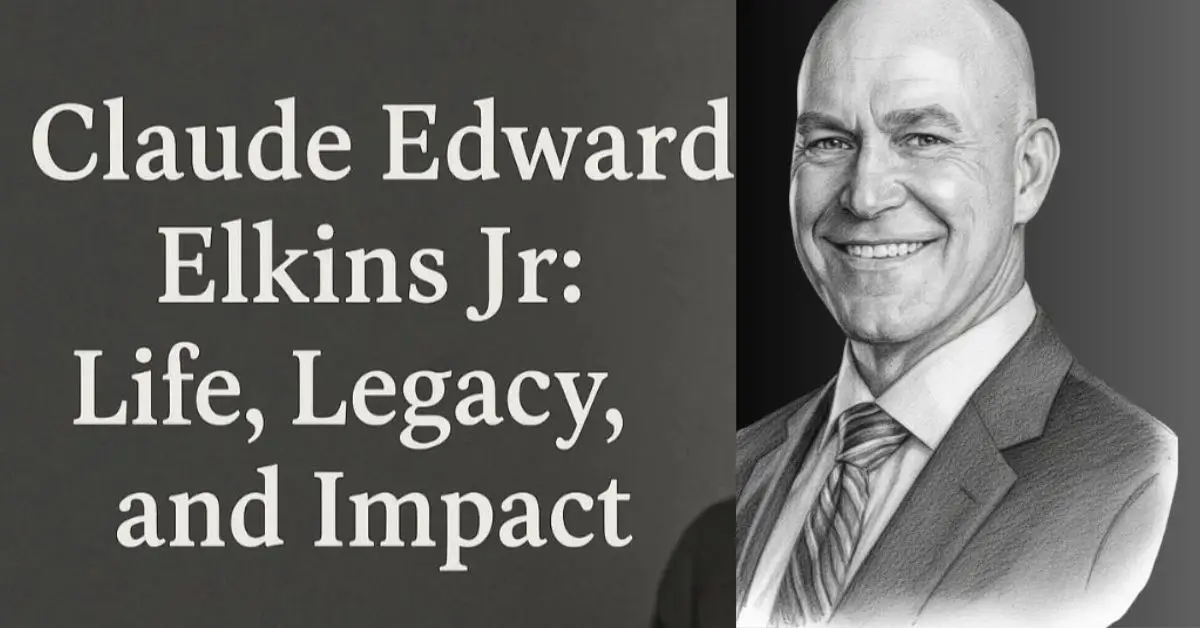ENTERTAINMENT
Best Bookshelf Speakers: Top Picks for Clear, Rich Sound

Best Bookshelf Speakers Audiophiles appreciate their ability to fill rooms with detailed stereo imaging and expansive soundstage, while casual listeners enjoy the blend of aesthetics and acoustics. Modern bookshelf monitors offer enhanced frequency response, quality tweeters and woofers,DSP features, and even wireless streaming capabilities—ideal for desktop setups or intimate listening spaces.
What Makes a Pair of Bookshelf Speakers Exceptional?
Every excellent bookshelf speaker begins with drivers—a combination of a tweeter and woofer designed for precise sound reproduction. High-end models often use silk dome tweeters for smooth highs and cellulose fibre woofers for tight bass. When paired with a well-designed cabinet, these elements deliver accurate frequency response that brings music to life.
Cabinet design plays a crucial role in minimizing resonance. Look for solid MDF or braced enclosures, which help reduce unwanted vibrations and produce a cleaner audio signal. A bass‑reflex port or passive radiator can extend low‑end performance without sacrificing clarity.
Another key factor is impedance. Most bookshelf models are rated at 6–8 Ω, making them compatible with many stereo amplifiers and AV receivers. However, efficient speakers (with high sensitivity ratings) can be driven well even by lower-powered units—especially handy if your setup includes an integrated amplifier or even high‑quality Bluetooth receiver.
Wired vs. Wireless: Which Format Suits Your Needs?
Wired Connections
Classic speaker wire (RCA or spring-clip binding posts) ensures uncompressed signal flow and rock-solid connectivity. Audiophiles often favor wired setups to preserve full resolution—especially when using lossless sources like vinyl, CD, or high-resolution digital files. A dedicated amplifier or AV preamp can further optimize performance through refined amplification stages and better DSP.
Wireless and Powered Options
Active bookshelf speakers with built-in amplification and streaming features are gaining popularity. They combine Bluetooth connectivity, Wi‑Fi audio, and popular platforms like Roon Ready, Spotify Connect, or AirPlay 2. This hybrid design eliminates the need for a separate amp and lets you integrate seamlessly into a smart home system.
Some models include Digital Signal Processing (DSP) for room correction and custom EQ. When calibrated properly, they can compensate for room acoustics issues like nulls or peaks—improving clarity and musicality.
Key Performance Metrics to Consider
-
Frequency response: A wide range, typically 50 Hz to 20 kHz, indicates ability to reproduce both low rumble and crisp highs.
-
Sensitivity: Measured in dB. Values above 88 dB mean speakers will sound louder at lower power levels—useful in smaller rooms or with lower-wattage amps.
-
Stereo imaging and soundstage: Great bookshelf speakers project instruments beyond their physical location. You should feel like you’re in the middle of a live performance.
-
Distortion: Look for total harmonic distortion (THD) under 0.5% at normal listening levels to maintain fidelity.
-
Build quality: Magnetic shielding matters if you plan to use speakers near sensitive equipment like CRT displays.
Room Size and Placement Tips
A mid-sized bookshelf unit performs best in rooms up to around 20 m². For larger spaces, consider pairing with a compact subwoofer to reinforce low frequencies without compromising definition.
To optimize placement:
-
Keep speakers at least 15 cm from walls to reduce bass boom.
-
Angle them so tweeters are at ear level when seated.
-
Form an equilateral triangle between your listening position and the pair.
-
Use foam pads or isolation stands to prevent surface vibrations.
These simple adjustments can dramatically improve soundstage depth and overall clarity.
Choosing the Right Amplifier or Receiver
If you opt for passive bookshelf speakers, your amplifier should match their impedance and recommended power range. Many models recommend 20–100 W per channel—so choose a stereo amp that delivers clean power without peak distortion.
For active speakers, make sure the built-in amp is robust enough for your room and listening style. Features like auto standby, adjustable gain, and multiple digital inputs can enhance usability. Audiophile-grade DACs and support for audio formats like FLAC, ALAC, and DSD typically indicate serious sound quality under the hood.
Popular Types and Recommended Models
Below are some types you’ll encounter:
| Category | Example Models | Strengths |
|---|---|---|
| Entry‑Level Monitors | ELAC Debut 2.0 B6.2 | Balanced sound; excellent value |
| Audiophile Classics | KEF LS50 Meta | Uni‑Q driver, precise imaging |
| Wireless Actives | Audioengine HD6 MK3 | Built‑in amp, Bluetooth, USB DAC |
| Sub‑Integrated Systems | Klipsch R-41PM + sub | Punchy bass, vintage horn-loaded design |
| Room‑Correcting Actives | KEF LSX II | DSP, Wi‑Fi streaming, compact footprint |
Each option caters to different listener preferences—from studio‑style neutrality to lively, room-filling sound.
Tuning Your System for Optimal Performance
-
Voicing/EQ: Many bookshelf speakers come with tone controls (e.g., “bright”, “warm”). Use a calibrated pink noise test to smooth frequency response for more natural sound.
-
Breaking them in: New units may sound stiff for the first 20–30 hours. Over time, drivers loosen up and reveal full detail.
-
Bi‑wiring: If your amp supports it, separating high and low-frequency cables can reduce crossover interference—though results are incremental.
-
Acoustic treatment: Bookshelves benefit from soft furnishing, wall panels, or bass traps to minimize reflections and standing waves.
Integrating with Multimedia Systems
Bookshelf monitors aren’t just for music—they can elevate gaming setups, desktop computers, and home offices. With analog and digital inputs, they can connect directly to turntables, streamers, and even TVs. Models with optical or USB inputs double as full multimedia speakers without needing separate hardware.
FAQs
Q: Do bookshelf speakers need a subwoofer?
A: Not necessarily, but adding a compact sub can extend bass response if you enjoy EDM, orchestral music, or home theater-like impact.
Q: Is it better to choose passive or active speakers?
A: If you already own an amp or want room for stereo upgrades, passive is ideal. Active speakers are simpler and often bring added value via built-in streaming and DSP.
Q: How do I know if I need DSP or room correction?
A: If your listening room is small or has reflective surfaces, DSP can smooth out anomalies and tighten bass performance more effectively than hardware alone.
Q: What’s a good wattage for bookshelf speakers?
A: Aim for amps that deliver at least 1.5× the speaker’s nominal power rating to ensure clean headroom without distortion.
Q: Can I use bookshelf speakers for movies?
A: Absolutely—while full surround is preferred for immersive audio, a good pair can serve as front-channel speakers, delivering precise dialogue and sound effects.
Conclusion
Selecting one of the best bookshelf speakers means balancing technical specifications with personal preference. Whether you crave studio-level transparency, dynamic live concert vibe, or seamless modern streaming, there are bookshelf systems tailored to your needs. Pay attention to driver quality, cabinet design, amplifier pairing, and placement—and remember, careful tuning and room treatment can significantly elevate your system. With the right setup, your listening sessions will feel richer, clearer, and more engaging than ever.
ENTERTAINMENT
Who Is Claude Elkins? Career and Rail Industry Impact

To understand Claude Elkins, you need to know the foundations of his career. Currently serving as Executive Vice President and Chief Commercial Officer of Norfolk Southern, Elkins is responsible for aligning the company’s commercial strategy with its operations. This means he oversees everything from customer relationships to revenue growth, all while balancing the challenges of a competitive logistics market.
Elkins isn’t just an executive on paper. His role demands foresight, resilience, and the ability to lead teams across multiple disciplines. This makes him not just a railroad marketing executive, but also a strategist who understands both people and infrastructure.
Claude Elkins Bio
| Field | Details |
|---|---|
| Full Name | Claude E. “Ed” Elkins Jr. |
| Known As | Ed Elkins |
| Current Position | Executive Vice President & Chief Commercial Officer, Norfolk Southern |
| Industry | Freight Rail, Logistics, Transportation |
| Company | Norfolk Southern Corporation |
| Expertise | Railway industry leadership, logistics strategy, freight marketing, customer relations |
| Career Progression | Rose through multiple roles in rail operations, logistics, and marketing before joining senior leadership |
| Special Focus | Commercial strategy, customer solutions, sustainable freight growth |
| Leadership Style | Approachable, collaborative, grounded in operational knowledge |
| Education | [Insert verified degree/university if available – can research deeper if needed] |
| Notable Strengths | Adaptability, long-term strategic vision, customer-focused leadership |
| Key Contributions | Strengthening Norfolk Southern’s commercial presence, expanding into new markets, driving digital and sustainable logistics innovation |
| Public Recognition | Widely regarded as a reliable and forward-thinking railroad logistics executive |
| Core Values | Integrity, collaboration, innovation, operational excellence |
| Relevance in 2025 | Leading Norfolk Southern’s growth amid supply chain shifts and sustainability challenges |
Ed Elkins Norfolk Southern: Building a Commercial Legacy
If you’ve ever wondered how Norfolk Southern stays relevant in a rapidly changing industry, the answer lies in leadership figures like Ed Elkins. His ability to adapt to customer needs while keeping efficiency at the forefront has defined his reputation.
Norfolk Southern has long been one of America’s top freight railroads, serving a vast network of industries. Under Elkins’ commercial oversight, the company has strengthened ties with customers in automotive, intermodal, agriculture, and energy. This highlights his role not just as a commercial officer at Norfolk Southern, but as someone shaping the future of freight rail.
Norfolk Southern Executive Biography: The Man Behind the Title
Biographies often reduce executives to a timeline of positions held, but Elkins’ story is about perseverance and vision. Claude Elkins’ corporate profile shows a steady rise through the ranks—evidence that his leadership wasn’t handed to him but earned.
From his early days in the railroad business to leading at one of America’s largest railroads, his Elkins career progression demonstrates a commitment to learning and adapting. This adaptability is crucial in logistics, where global supply chain disruptions, energy transitions, and customer expectations keep evolving.
Elkins Career Progression: From the Ground Up
Every successful leader has a journey, and for Claude Elkins, it’s one of continuous growth. Unlike executives who move from industry to industry, Elkins has spent decades deepening his expertise in freight rail.
He began in entry-level positions that allowed him to learn the day-to-day workings of railroads. This gave him firsthand knowledge of what frontline employees face, knowledge he carried with him as he rose to senior leadership. It’s this grounded experience that makes him relatable, both to the boardroom and the rail yard.
One Norfolk Southern employee once remarked on social media, “Ed knows the business because he lived it. He doesn’t just manage from above—he listens, learns, and makes changes that actually matter.”
That’s the kind of endorsement most leaders dream about.
Railway Industry Leadership in 2025
The freight rail sector is under pressure like never before. Between environmental sustainability demands, digital transformation, and competition from trucking and shipping, leaders like Elkins must balance tradition with innovation.
Claude E. Elkins Jr. embodies modern railway industry leadership by embracing technologies such as predictive analytics, AI-powered logistics planning, and customer-focused digital platforms. He understands that to survive, railroads must be as agile as they are reliable.
Commercial Officer Norfolk Southern: Responsibilities and Impact
As the commercial officer of Norfolk Southern, Elkins’ role goes beyond sales. He integrates market intelligence with customer service to deliver long-term growth. His responsibilities include:
- Developing revenue strategies across different sectors
- Maintaining relationships with large-scale clients
- Coordinating with operations to ensure efficiency
- Overseeing the company’s pricing and marketing approach
- Driving sustainable business practices
In other words, Elkins acts as a bridge between Norfolk Southern’s customers and its internal teams, ensuring that the company’s promise aligns with its performance.
Railroad Logistics Executive: Navigating Challenges
What sets a railroad logistics executive apart from other business leaders is the scale of complexity. Railroads move millions of tons of goods across thousands of miles. That means Elkins has to think in both micro and macro terms—solving immediate operational issues while planning for decades ahead.
In 2025, his biggest challenges include:
- Supply chain volatility
- Meeting sustainability goals
- Competing with other transportation sectors
- Adapting to AI-driven logistics technologies
The fact that Elkins continues to thrive in such an environment speaks volumes about his resilience and strategic mindset.
Elkins Corporate Profile: Leadership Style
When you examine the Elkins corporate profile, a few themes stand out: adaptability, strategic foresight, and collaborative leadership.
Unlike some executives who lead with rigidity, Elkins is known for being approachable. He believes in building trust across all levels of the organization. That’s why colleagues describe him as a mentor, not just a manager.
This leadership style has paid off, creating a culture where employees feel valued while customers benefit from improved service reliability.
Railroad Marketing Executive: Driving Growth
Marketing in freight rail isn’t about flashy ads or slogans. It’s about proving value to businesses that depend on reliable transport. As a railroad marketing executive, Elkins has helped Norfolk Southern expand into new sectors while strengthening its reputation in traditional ones.
This includes introducing innovative service models, strengthening digital communication with clients, and positioning the company as an environmentally conscious partner in the supply chain.
Leadership in Freight Rail: Lessons from Elkins
So what can aspiring leaders learn from Claude Elkins’ leadership in freight rail?
- Start at the ground level – Deep knowledge of operations builds credibility.
- Adapt to change – From digital tools to sustainability, adaptability is key.
- Stay customer-focused – Railroads may move goods, but they ultimately serve people.
- Lead with humility – Listening is as important as decision-making.
- Think long-term – Freight rail investments span decades, not quarters.
These lessons extend beyond railroads and apply to any industry navigating rapid change.
Real-Life Example: When Leadership Meets Crisis
In recent years, the freight industry faced global challenges—from supply chain disruptions during the pandemic to new environmental standards. Elkins guided Norfolk Southern through these pressures by focusing on transparency and collaboration.
He didn’t shy away from challenges; instead, he framed them as opportunities to innovate. This proactive stance helped Norfolk Southern maintain strong client relationships even during turbulent times.
FAQ’s
Elkins’ career progression reflects decades of dedication in the rail industry. He worked his way up from operational roles to senior leadership, gaining firsthand knowledge of both strategy and execution.
As Executive Vice President and Chief Commercial Officer, he oversees revenue growth, customer relations, pricing strategy, and sustainable commercial practices.
He plays a critical role in adopting technology, improving sustainability, and positioning Norfolk Southern as a leader in modern logistics.
His unique blend of operational experience and strategic vision makes him a model for leadership in freight rail. He balances tradition with innovation, ensuring long-term growth.
Conclusion
Understanding Claude Elkins means understanding how leadership, adaptability, and strategy can shape an entire industry. His journey—from entry-level roles to Executive Vice President—reflects resilience and foresight. As the commercial officer of Norfolk Southern, he has helped redefine what it means to be a railroad logistics executive in the modern era.
ENTERTAINMENT
How to Join a Coom Party Online Safely

A coom party is an adult-oriented, live-streamed event where participants interact in real time with performers. These events often feature multiple performers and allow viewers to engage via chat, tips, or other interactive tools. The experience is highly social and immersive, combining elements of traditional adult entertainment with live streaming technology.
“I joined my first coom party last month, and the interactivity was unlike anything I’ve experienced. It felt like being part of a real community,” said one first-time participant.
Key Features of a Coom Party Online
- Live Interaction: Viewers can communicate with performers in real-time, requesting actions or sending reactions.
- Community Engagement: Many coom parties have dedicated spaces for fans to interact, creating a sense of belonging.
- Accessibility: These events are available via web browsers and mobile apps, making it easy to join from anywhere.
- Privacy Controls: Leading coom parties platforms provide anonymity and user protection features.
Coom Parties Live Stream: How It Works
Joining a coom parties live stream is simple but comes with a few best practices to ensure privacy and enjoyment.
- Choose a Reputable Platform: Only use trusted coom parties platforms that secure data and protect users.
- Create an Account: Registration is often required, though some streams offer guest access.
- Select an Event: Many sites categorize adult coom parties streams by theme, performer, or interactivity level.
- Engage Responsibly: Chat, tip, or interact within the community rules. Respect performers and other participants.
Popular Streaming Features
- Multi-performer sessions
- Viewer-controlled lighting or camera angles
- Virtual gifts or tokens
- Interactive polls and mini-games
Adult Coom Parties Trends in 2025
Coom party videos and streams have evolved rapidly. Here are some trending features:
- Interactive Coom Party Experiences: Real-time engagement has become the standard, with performers responding directly to viewers.
- NSFW Live Party Integration: Many platforms now support adult-only events that incorporate gaming, music, and themed parties.
- High-Quality Video Streams: HD streaming ensures a premium experience.
Safety and Privacy in Coom Parties Communities
Being part of a coom party community requires awareness of privacy and safety:
- Use Pseudonyms: Protect your identity by avoiding real names.
- Secure Devices: Ensure your devices are free from malware or spyware.
- Platform Verification: Only participate in verified webcam adult party streams to avoid scams.
Popular Coom Party Platforms
Choosing the right coom party platform can make or break your experience. Features to look for:
- Strong erotic live streaming infrastructure
- Active moderation and safe chat policies
- Multiple payment options for tips or subscriptions
- Access to coom party videos and archives
Some platforms also offer interactive coom party features, allowing viewers to influence events, creating a unique participatory experience.
Hosting Your Own Coom Party
If you’re interested in creating an adult coom party:
- Select a Platform: Ensure it supports multi-user streaming.
- Plan Your Event: Decide on performers, themes, and interactivity levels.
- Promote Safely: Use community channels without exposing personal information.
- Moderate Effectively: Keep interactions respectful and within platform rules.
Coom Party Etiquette and Community Guidelines
Respecting coom party communities ensures everyone enjoys the experience:
- Avoid spamming or harassing performers.
- Engage positively in chats.
- Follow tipping or interaction rules.
- Do not record coom party videos without permission.
FAQ’s
A coom party online is a live-streamed adult event where viewers can interact with performers in real time, often using chat and tipping features.
Yes, as long as you use verified coom party platforms, maintain privacy, and follow community guidelines.
Yes, but platforms usually require verification, adherence to rules, and responsible moderation.
Most webcam adult party streams are accessible via desktop, smartphone, or tablet, with mobile apps providing optimized experiences.
Final Thoughts
Whether you’re exploring your first coom party live stream or are a seasoned participant, staying informed, respectful, and safe is key. Engage responsibly, choose trusted platforms, and explore the interactive possibilities. The world of adult coom parties offers a unique combination of community, entertainment, and immersive digital experiences.
ENTERTAINMENT
Is Vumoo Safe to Watch Movies Online?

Streaming movies and shows online is more popular than ever, but with so many free platforms popping up, a common question arises: is Vumoo safe? Many users love the convenience of free streaming, but safety, legality, and device security remain top concerns. In this guide, we’ll dive deep into Vumoo’s features, risks, and best practices so you can stream smartly in 2025.
What Is Vumoo? Overview of the Vumoo Streaming Site
Vumoo is a free online streaming site that offers movies and TV shows without requiring a subscription. Its intuitive interface and large library make it appealing, but users often wonder about the Vumoo site security and the legality of its content.
Key Features of Vumoo:
- Wide selection of Vumoo movies online and Vumoo TV shows free
- No mandatory account registration
- Simple, ad-supported streaming
- Mobile-friendly platform
“I’ve been using Vumoo for casual movie nights, but I always double-check safety first,” shares a frequent streamer.
Is Vumoo Safe to Use? Understanding the Risks
While Vumoo provides free access to popular content, there are inherent risks with free movie streaming sites. Users need to understand:
Malware and Adware Concerns
Clicking suspicious pop-ups or download links can compromise your device. Ensure your Vumoo app safety by using antivirus software and avoiding unofficial app downloads.
Legal and Copyright Issues
Streaming copyrighted content without permission can have legal repercussions. Check online streaming legality in your region before using Vumoo.
Data Privacy
Avoid submitting personal information on unofficial Vumoo links. Stick to the main site and use a VPN for enhanced security.
Vumoo Platform Review: Features, Pros, and Cons
Pros of Using Vumoo
- Extensive library of movies and TV shows
- No subscription or login required
- Clean, user-friendly interface
- Works on desktops, laptops, and mobile devices
Cons of Using Vumoo
- Ads and pop-ups can be intrusive
- Legal status is ambiguous in some regions
- Risk of phishing or malware from unofficial links
- No offline download option
Tips for Safe Streaming on Vumoo
Use Ad Blockers and VPNs
Combine a reliable VPN with ad-blocking tools to maximize Vumoo site security.
Avoid Downloading Unknown Apps
Stick to browser streaming instead of third-party Vumoo app downloads to prevent malware.
Check for HTTPS and Verified URLs
Always ensure the URL begins with HTTPS to encrypt your connection and reduce hacking risks.
Vumoo Alternatives: Safe Streaming Platforms
If you want safer options, consider legitimate platforms with free or trial content:
- Crackle – free movies and shows, ad-supported
- Tubi TV – free streaming with verified library
- Popcornflix – legal access to popular movies
- Pluto TV – live TV and on-demand content
FAQs
Vumoo operates in a gray area. Streaming copyrighted content without permission may be illegal in some countries.
Yes, if you use a VPN, ad-blocker, and avoid suspicious downloads. Always stick to the official site
Yes, platforms like Tubi TV, Crackle, and Pluto TV provide verified, ad-supported free movies safely.
Vumoo is free and convenient but lacks guaranteed safety, HD streaming, or official licensing like Netflix or Hulu.
Conclusion
Vumoo can be safe for casual streaming if users follow security tips, such as using a VPN, ad-blockers, and verified URLs. However, it carries some risks, and legality may vary by region. For a worry-free experience, consider verified free streaming platforms or paid subscriptions.
-

 BUSINESS2 months ago
BUSINESS2 months agomPaaS: Powerful Precision for Modern Measurement
-

 BLOG4 months ago
BLOG4 months agoToyota Sequoia Towing Power: What Can It Really Haul?
-

 BLOG4 months ago
BLOG4 months agoGolden Cream of Spain: A Heritage Rich in Taste and Tradition
-

 BLOG3 months ago
BLOG3 months agoFinding Home in China: A Journey Through Culture and Comfort
-

 BLOG3 months ago
BLOG3 months agoYE Tracker: Your Ultimate YouTube Earnings Companion
-

 EDUCATION3 months ago
EDUCATION3 months agoStolen Mail, Lost Checks, Hijacked Credit
-

 BLOG3 months ago
BLOG3 months agoDJ On Board: Spinning Beats at Every Turn
-

 FASHION4 months ago
FASHION4 months agoParfum vs Cologne: What’s the Real Difference?


